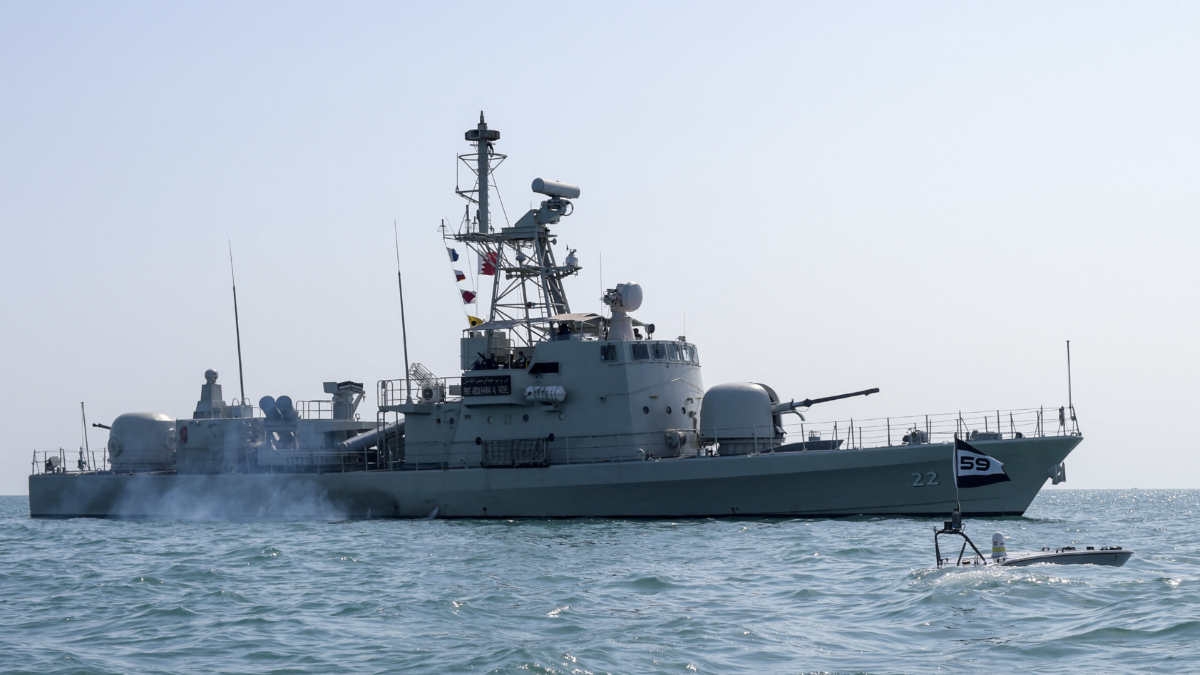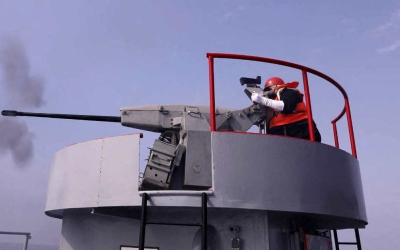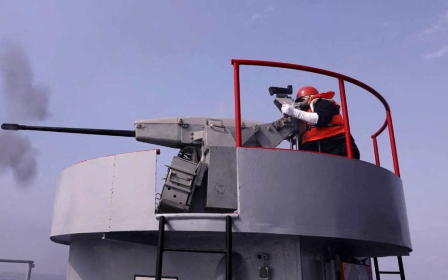US considers deploying troops to commercial vessels in Gulf amid Iran tensions

The US is weighing an unprecedented step to deploy troops to commercial vessels in the Persian Gulf after Iran’s seizure of tankers in the area.
The US is considering the move against the backdrop of stalled talks to revive the 2015 nuclear deal.
Washington has already boosted its military presence in the Gulf by sending F-35 fighter jets and a marine expeditionary force to the region.
The additional 2,500 marines could provide the bulk of manpower for future deployments to commercial vessels.
The Associated Press, which first reported the plan, cited five unnamed US officials who stressed that no final decision has been made. The US also needs to consult with its Gulf Arab allies and companies that own vessels in the region about deployments.
New MEE newsletter: Jerusalem Dispatch
Sign up to get the latest insights and analysis on Israel-Palestine, alongside Turkey Unpacked and other MEE newsletters
One unnamed official told the AP that troops would only be sent onboard commercial ships with the approval of the country under which the vessel is flagged and the country under which the owner is registered.
Return of tanker wars?
Iran has stepped up its seizure of tankers in the region - a common practice when tensions with the US escalate. In April, Iranian naval commandos seized an oil tanker carrying oil from Kuwait to Houston, Texas, for US energy giant Chevron.
A second tanker, Panama-flagged tanker Niovi, was sailing around the coast of the UAE, from Dubai towards Fujairah, when it was stopped by the Islamic Revolutionary Guard Corps (IRGC) on 3 May.
In July, the US said it had successfully prevented two attempted commercial tanker seizures by the Iranian navy which opened fire on the vessels near the Strait of Hormuz, the vital sea passage between the Gulf and the open ocean through which around 20 percent of the world's oil, and around 25 percent of the world's liquified natural gas, pass through.
The US has come under pressure from its Arab partners to beef up its security umbrella in the strategic region. In May, the UAE said it was exiting a US-led multinational security force that protects shipping in the Gulf, after reports that Abu Dhabi felt slighted by Washington’s response to Iranian tanner seizures.
In an affront to their allies in Washington, the UAE, along with Saudi Arabia and Oman said they would join a Chinese-led naval alliance that includes Iran to police the Gulf.
“It defies reason that Iran, the number one cause of regional instability, claims it wants to form a naval security alliance to protect the very waters it threatens,” Commander Tim Hawkins, the spokesman for the US 5th Fleet and Combined Maritime Forces, told Breaking Defense in response to the move.
The UAE and Saudi Arabia view Iran as a major foe, but analysts say they have been hedging their bets against concerns about US disengagement from the region by reaching out to the Islamic Republic.
On Thursday, Iran's President Ebrahim Raisi officially invited his Emirati counterpart, President Mohammed bin Zayed al-Nahyan to visit Tehran. Meanwhile, Saudi Arabia reestablished diplomatic ties with Iran in March in a deal brokered by China.
Middle East Eye delivers independent and unrivalled coverage and analysis of the Middle East, North Africa and beyond. To learn more about republishing this content and the associated fees, please fill out this form. More about MEE can be found here.





